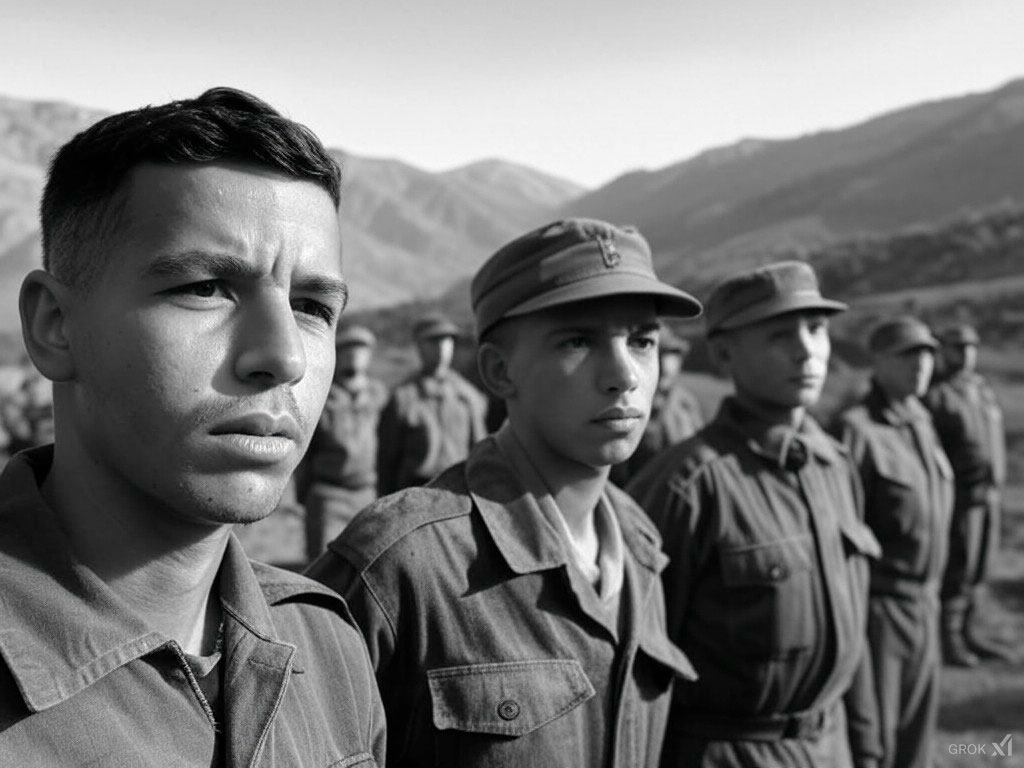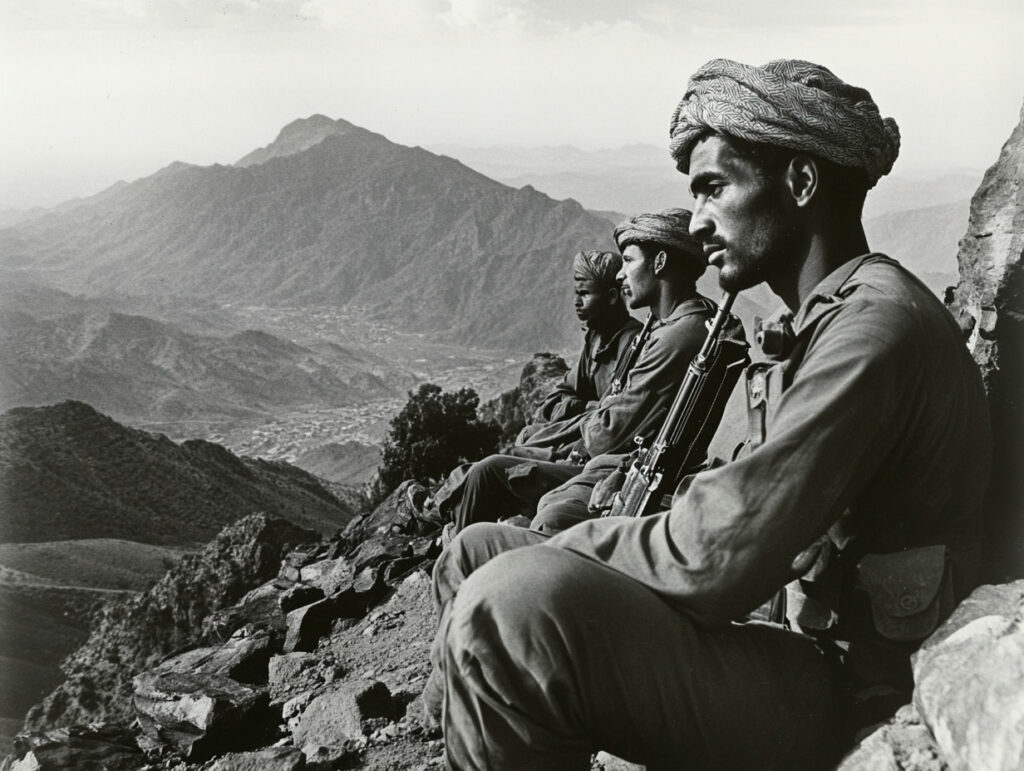An in-depth analysis of the 1963 Sand War between Algeria and Morocco, exploring its causes, key players, significant events, and lasting consequences.
In 1963, a border dispute between Algeria and Morocco escalated into the Sand War, a brief but intense conflict. The clash centered around territorial claims, particularly in the regions of Tindouf and Béchar. Morocco asserted historical rights over these areas, while Algeria, having recently gained independence from France, maintained that the borders established during colonial rule were legitimate. The war began in September 1963, with skirmishes evolving into larger battles. Despite initial Moroccan advances, Algerian forces, bolstered by international support, managed to halt further incursions. By October 30, 1963, a ceasefire was brokered, leading to the establishment of a demilitarized zone and the involvement of the Organisation of African Unity (OAU) in peacekeeping efforts. The conflict resulted in heightened tensions between the two nations, influencing their future relations and regional dynamics.
What Were the Reasons for the Sand War
The Sand War stemmed from deep-rooted territorial disputes between Algeria and Morocco. Upon gaining independence from France in 1956, Morocco laid claim to territories it considered part of its historical domain, including areas within present-day Algeria. These claims were influenced by the concept of a “Greater Morocco,” which encompassed regions like Tindouf and Béchar.
Algeria, after achieving independence in 1962, inherited borders defined by French colonial authorities. The new Algerian government, led by President Ahmed Ben Bella, insisted on upholding these borders, emphasizing the principle of territorial integrity. This stance conflicted with Morocco’s territorial aspirations.
Tensions escalated due to several factors:
- Colonial Legacy: The arbitrary borders drawn by colonial powers often ignored ethnic and historical considerations, leading to disputes post-independence.
- Resource Rich Areas: The contested regions were believed to be rich in minerals, making them economically significant for both nations.
- Political Dynamics: Morocco’s monarchy, under King Hassan II, and Algeria’s revolutionary government had differing political ideologies, further straining relations.
Initial skirmishes along the border in 1963 intensified these tensions. Both nations mobilized troops, and diplomatic efforts to resolve the dispute failed, culminating in open conflict by September of that year.

Who Was Involved in the Sand War
The primary actors in the Sand War were the nations of Algeria and Morocco. Key figures included:
- King Hassan II of Morocco: Ascended to the throne in 1961, he pursued policies aimed at reclaiming territories considered historically Moroccan.
- President Ahmed Ben Bella of Algeria: As Algeria’s first president post-independence, he focused on consolidating the nation’s sovereignty and defending its inherited borders.
Both countries mobilized their military forces:
- Royal Moroccan Army: Engaged in initial offensives, aiming to assert control over disputed territories.
- Algerian National Army: Responded to Moroccan advances, defending its territorial claims.
International actors also played roles:
- Organisation of African Unity (OAU): Mediated peace efforts and deployed its first multinational peacekeeping mission to monitor the ceasefire.
- Cuba: Sent military advisors and equipment to support Algeria, reflecting broader Cold War dynamics.
These participants shaped the course and outcome of the conflict through their actions and interventions.
The Leaders of the Sand War
Key leaders during the Sand War included:
- King Hassan II of Morocco: Born in 1929, he became king in 1961. Educated in law and known for his political acumen, Hassan II sought to expand Morocco’s territory based on historical claims. His leadership during the Sand War was marked by efforts to assert these claims militarily.
- President Ahmed Ben Bella of Algeria: Born in 1916, Ben Bella was a prominent figure in Algeria’s fight for independence. After independence, he became the nation’s first president. His tenure focused on nation-building and defending Algeria’s territorial integrity against external claims.
- Houari Boumédiène: Serving as Algeria’s Minister of Defense during the conflict, Boumédiène played a crucial role in organizing the country’s military response to Moroccan incursions.
These leaders’ decisions and strategies significantly influenced the progression and resolution of the Sand War.
Was There a Decisive Moment?
A pivotal moment in the Sand War occurred in October 1963, when Moroccan forces launched a significant offensive aiming to capture the town of Tindouf. This move was strategic, targeting a key location within the disputed territory. However, the offensive stalled due to unexpectedly strong resistance from Algerian forces, who were bolstered by international support, notably from Cuba.
The failure of this offensive marked a turning point. It demonstrated Algeria’s resolve and capability to defend its territory, leading to a shift in momentum. Subsequent diplomatic interventions, particularly by the Organisation of African Unity (OAU), facilitated negotiations between the two nations.
By October 30, 1963, a ceasefire was declared, largely influenced by the stalemate resulting from the failed Moroccan offensive. This ceasefire led to the establishment of a demilitarized zone and set the stage for future peace agreements.

Major Battles of the Sand War
The Sand War comprised several key engagements:
- Initial Skirmishes (September 1963): Tensions along the undefined border led to minor clashes between Moroccan and Algerian forces. These skirmishes set the stage for larger confrontations.
- Battle of Hassi Beida and Tindjoub (October 1963): Moroccan forces advanced into these border posts, aiming to assert control over the disputed areas. The Algerian army mounted a defense, resulting in intense fighting. Casualty reports vary, but both sides suffered losses.
- Tindouf Offensive (October 13, 1963): Morocco launched a major offensive targeting Tindouf. The operation stalled due to strong Algerian resistance and logistical challenges faced by Moroccan troops operating far from their supply bases.
- Northern Front Engagements (Mid-October 1963): Algeria opened a new front near the town of Ich, attacking Moroccan positions. This move expanded the conflict and strained Moroccan defenses.
- Operation Dignidad (Planned for Late October 1963): Algeria, with Cuban support, planned a counteroffensive to reclaim lost territories and push into Moroccan-held areas. However, diplomatic interventions led to the suspension of this operation.
Throughout these battles, both sides faced challenges related to logistics, terrain, and international pressure. The conflict’s intensity and the involvement of external actors underscored the broader geopolitical implications of the war.
Was There a Turning Point?
The turning point in the Sand War was the failed Moroccan offensive on Tindouf in mid-October 1963. This operation aimed to deliver a decisive blow to Algerian defenses and secure a strategic advantage. However, the unexpected resilience of Algerian forces, combined with their utilization of familiar terrain, thwart ed Moroccan advances. The failure of this offensive demonstrated the limits of Morocco’s military reach and signaled that a quick victory was unattainable.
Another factor contributing to the turning point was international pressure. Several African nations, particularly Egypt and Mali, sided with Algeria, advocating for a diplomatic resolution. The Organisation of African Unity (OAU) increased its mediation efforts, warning that prolonged conflict could destabilize the region.
By late October 1963, Morocco faced logistical difficulties, and its forces were stretched thin. The Algerian counteroffensive, supported by Cuban military advisors, created additional challenges for Moroccan forces. Recognizing the situation, King Hassan II agreed to participate in ceasefire negotiations, leading to an official cessation of hostilities on October 30, 1963.
This shift in momentum—marked by the failure of Morocco’s offensive, Algeria’s growing resistance, and diplomatic intervention—cemented the war’s outcome.
Consequences of the Sand War
The Sand War had significant consequences for Algeria, Morocco, and regional politics.
1. Worsening Algeria-Morocco Relations
The war deepened animosity between the two nations. Although a ceasefire was reached, tensions over the border dispute remained unresolved. Diplomatic relations were strained for decades, influencing North African politics and regional alliances.
2. Strengthening of Algerian Sovereignty
Algeria’s ability to defend its borders reinforced its sovereignty. The country’s leadership used the war’s outcome to solidify internal unity, portraying the conflict as a successful defense of national integrity.
3. Moroccan Military and Political Reassessment
The failure to secure territorial gains forced Morocco to reassess its military capabilities and foreign policy strategies. King Hassan II, while maintaining his claims, adopted a more diplomatic approach in subsequent years.
4. Role of the Organisation of African Unity (OAU)
The Sand War was one of the first major tests for the OAU’s conflict resolution mechanisms. The organization’s mediation efforts helped prevent escalation, establishing it as a relevant actor in African diplomacy.
5. Continued Border Tensions
Despite the ceasefire, tensions persisted over the next decades, particularly regarding Western Sahara. The Algerian-Moroccan rivalry shaped North African geopolitics, influencing regional alliances and military developments.
The Sand War did not result in significant territorial changes, but it had long-term effects on political relations, military strategies, and regional diplomacy in North Africa.
Back to the Wars section